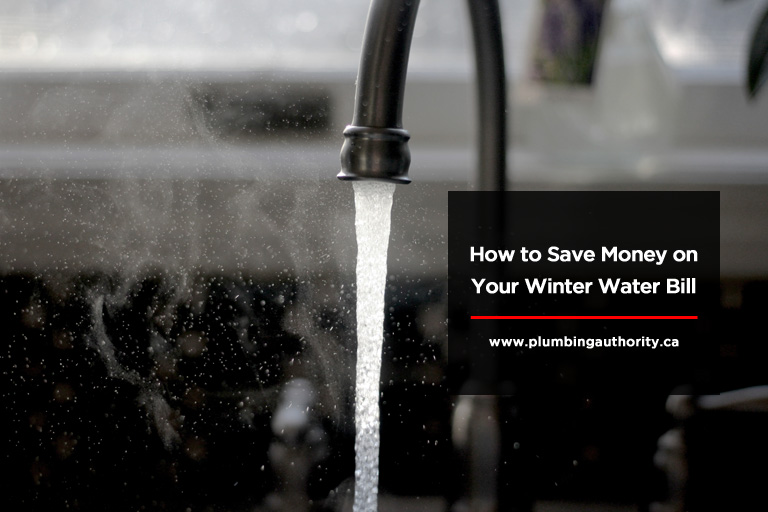
The Halloween pumpkins have disappeared and some mornings you find yourself eyeing your bulky coat, thinking, “Too soon?” We’re on the verge of winter and everything that comes with it — snow, cold weather, holiday lights, and that dreaded water bill. In the depths of winter, it can be a real challenge to keep costs down or even understand why the bill is so high.
The average person in Canada uses 329 litres of water each day. That ranks us very high on the scale of water usage per country. Of 29 developed nations in the Organization for Economic Co-operation and Development, we are the second biggest consumers. Here are some relatively simple suggestions for reducing your water usage and lowering those monthly bills this winter.
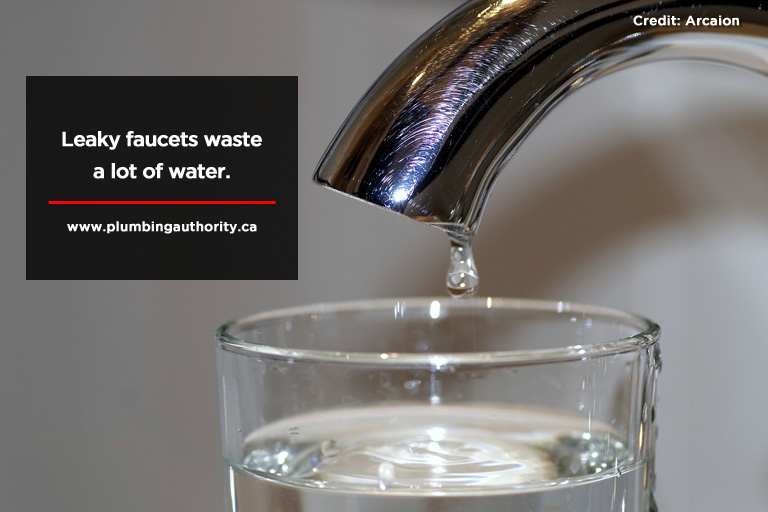
1.Fix Leaky Faucets. Do you lie awake at night listening to the sound of a dripping faucet? If so, you’re letting a lot of money go right down the drain because those drops add up. Hydro-Quebec has estimated that the water from a dripping tap is enough to fill four bathtubs to the brim every month. To prevent this, it’s important that you fix any leaky faucets in your home.
2.Install Aerators. Consider installing aerators on your faucets. These small devices screw onto the end of the tap and add air to the water as it comes out. Aerators save you money by reducing the amount of water that flows through by up to 50% for each faucet.
3.Turn Off the Tap. This is a basic change that’s simple to make: just turn off the tap when you’re not using it. If you’re brushing your teeth, shaving, or doing any other activity that doesn’t require the water to be on, shut it off.

4.Save Your “Waiting Water.” It’s common for people to let the water run until it reaches the desired temperature. Instead, put a bucket under the tap and save that water for another time and purpose like washing dishes, drinking hand-washing clothes, or watering plants.
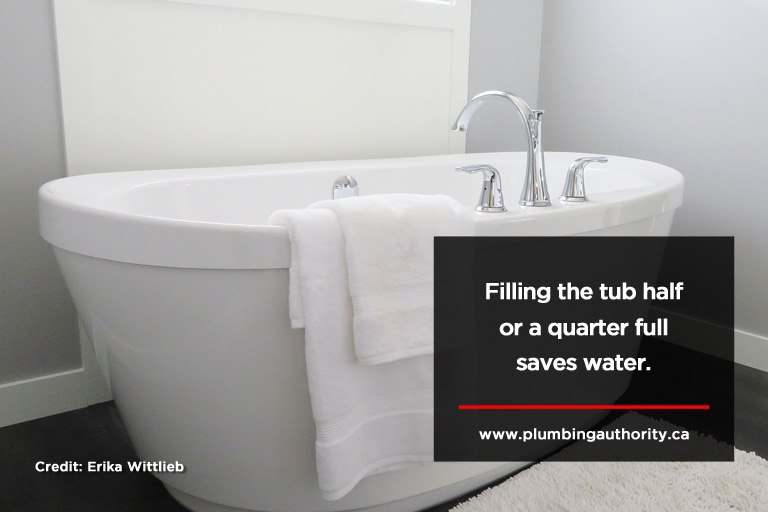
5.Fill the Bathtub Only Halfway: Bathing uses up a lot of water. In fact, about 35% of the water used by Canadians is just for this purpose. Filling a standard bathtub to the top requires about 400 litres, so try filling it halfway and you’ll save 200 litres. If you’re really keen to save, try filling it a quarter of the way.
6.Skip the Bath: As long as you keep your shower time to a minimum, showering uses far less water than bathing. You use about 9.5 litres of water per minute when you take a shower, making it a more cost-effective way to get clean. Bathe once in a while as a treat, but try to do it no more than once a week.
7.Take Shorter Showers: Limit the amount of time you spend in the shower. Be efficient. If you shower for 20 minutes, you’ve used the equivalent of half a bathtub full of water. Start with ten minutes and then decrease it as much as you can.
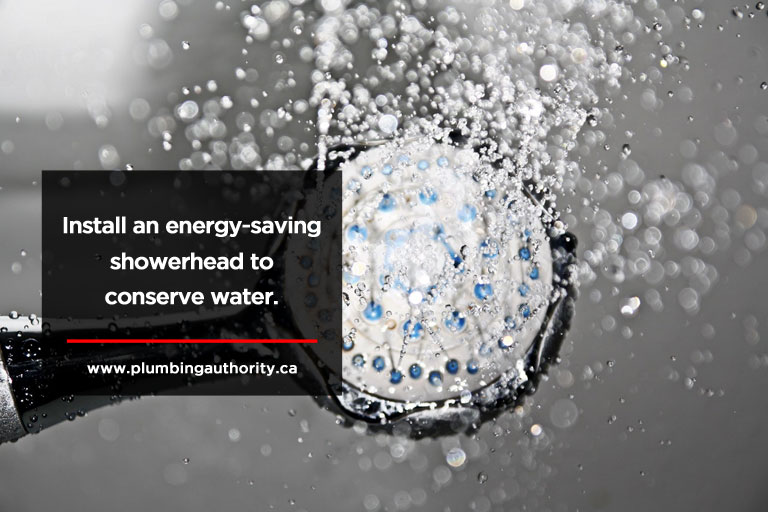
8.Install an Energy-Saving Showerhead: In North America, showering makes up about 22% of water usage. A low-flow showerhead saves water and lowers your energy bills by about 50%. Low-flow showerheads are also affordable and easy to install.

9.Use the Dishwasher: Most people think a dishwasher uses a lot of water. As long as it’s full, it actually uses less fluid than washing dishes by hand. Try to use the short cycle to conserve even more. Energy-efficient dishwashers are available and also help lower your water bills. Now you have an excuse not to wash the dishes! (You’re welcome.)
10.Insulate the Water Pipes: Insulating your pipes is an effective step toward conserving water in the winter. Exposed pipes can burst, leading to costly damage in your home — and in your pocket, thanks to that unexpectedly high bill. Proper insulation also decreases the amount of time it takes for water to heat up so you won’t waste as much (unless you’ve been saving it!).
11.Rig your Toilet to Use Less Water: Every time you flush, you use between 1 and 16 litres of water. In Canada, flushing takes up 30% of our water. One solution is to make your toilet low-flush by putting a plastic bottle filled with water and rocks or sand (so it doesn’t shift in the tank) into the cistern. This will displace the water level so you’ll use less when you flush.
12.Limit Use of the Garbage Disposal: Your garbage disposal needs quite a bit of water to function. Try to avoid using it as much as you can. Food refuse can be composted or thrown into an organic waste receptacle.
13.Keep Cold Water in the Refrigerator: Fill any extra unused bottles with water and store them in the refrigerator. Use them in warmer months when you need cold water instead of running the tap until it gets cold. You can also put them in the freezer. Before you need one, take it out and let it melt.
14.Fill Your Washing Machine: Washing clothes takes up about 20% of the average home’s water use. If you do small and medium loads of laundry all the time, you’ll end up wasting a lot more water than you need to. Wait until you have a full load and then do a wash. (Be careful not to overfill the drum or your clothes won’t wash well.) Also, consider using cold water. It’s just as good at getting your clothes clean and it saves energy. As a side benefit, it will keep the colours in the fabrics brighter.
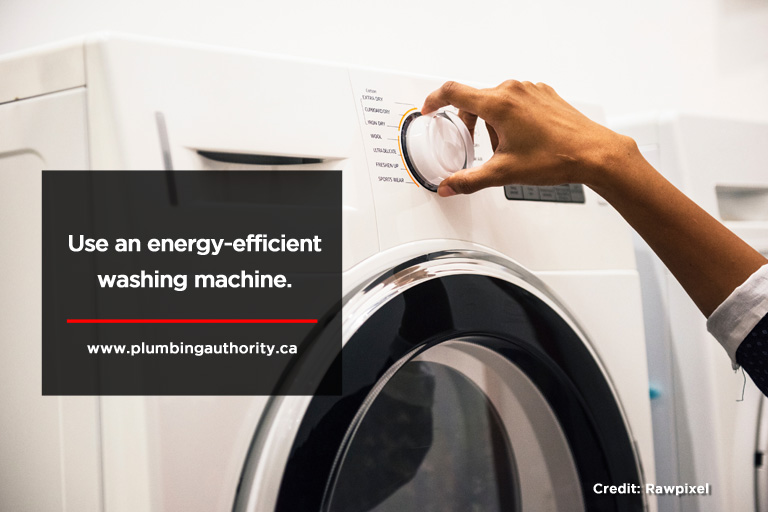
15.Buy an Energy-Efficient Washing Machine: There are several washing machine models that are energy-efficient and use up to 40% less water than a regular washer. Investing in one can help you save money on future energy and water costs.Now that you know how to save water in your home, you’re on your way to lowering your bills this winter and saving a lot of money for your household.
Plumbing Authority is available throughout the GTA to help you with all your plumbing needs. We offer free on-site estimates and 24-hour emergency services. Give us a call at (647) 992-PIPE (7473).




